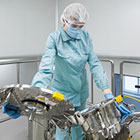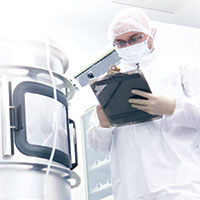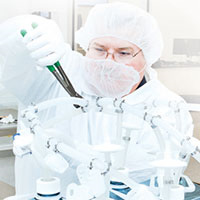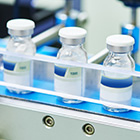Microbial based recombinant proteins
A wide range of recombinant proteins is produced using microbial (E. coli or yeast) fermentation – often being the preferred production method to drive efficiencies in the production process and to be faster to market.
The microbial process offers a lot of advantages – it is a safe expression system, and it allows for rapid and cost-effective development and production, while ensuring product quality and reproducibility.
However, some challenges remain, such as inconsistent protein expression during the microbial fermentation process, or the need to purify inclusion bodies with high-level expression or recombinant proteins leading to the formation of protein aggregation.
Avantor offers a broad range of products to aid in the recombinant protein manufacturing process based on a microbial expression system. These include fermentation products to support cell growth, reagents to enhance protein expression, through a range of products for the purification and recovery of inclusion bodies to excipients to help stabilize the final drug product.
Recombinant proteins workflow
Innovation is at the heart of Avantor®’s business model. We carry everything you’ll need to achieve your recombinant protein goals faster, more efficiently, and effectively. Discover high-quality products and services you need for every phase of your workflow. Browse our proteins and peptides product list or choose from our vast selection of protein reagents for the highest level of purity.
Ready to Get Started?

Ready to Maximize Production Efficiency?
Our Bioprocessing Solutions team can help you streamline your biomanufacturing processes!

PUPSIT: Exceeding expectations is the standard, not the exception
Avantor uses PUPSIT globally to reduce filter defects and contamination. We go beyond compliance in every detail, every day.
What Are Recombinant Proteins?
Recombinant proteins are artificially made in a laboratory using recombinant DNA technology. Cells are typically transfected with a DNA vector, cultured to transcribe and translate the protein, lysed, and purified. There are various ways to complete recombinant protein purification to maximize protein yield.
Advances in recombinant protein technology and research have expanded the applications of recombinant proteins to include their use as diagnostic reagents, therapeutics, and vaccines.
How Do Proteins Become Recombinant Proteins?
Proteins are the result of the expression of DNA. Recombinant proteins are the result of the expression of recombinant DNA (rDNA) within living cells. Laboratory methods used to construct recombinant DNA combine at least two DNA fragments from different sources. The recombinant DNA is then inserted into a vector and allowed to replicate inside a living cell.
Recombinant Protein Production
Recombinant proteins are manufactured using microbial (E. coli) expression systems. They represent a group of smaller protein molecules that include cytokine (erythropoietin or EPO), growth factors (insulin), and enzymes (Urokinase), among others.
Target proteins are secreted intracellularly using E. coli expression systems and may be challenging to recover. These insoluble proteins, along with other contaminants, are in inclusion bodies within the bacterial cytoplasm. Lysing the bacteria causes them to release the insoluble inclusion bodies.
After the proteins are solubilized and isolated, other mechanical and chemical additions allow proper protein folding. That results in biologically active proteins. Recombinant protein purification utilizing chromatography steps is comparable to that used for other biologics.
Find Everything You Need for Recombinant Protein Production at Avantor
Avantor® offers a broad range of products to aid in the recombinant protein process, including fermentation products to support cell growth and excipients, such as polysorbates, in the formulation range of chromatography media to help in recombinant protein purification.




